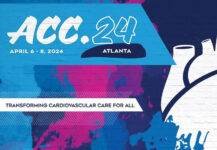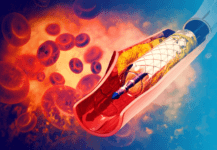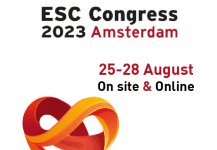Coronary revascularization aims at improving coronary flow. However, after successful percutaneous coronary intervention (PCI) a significant number of patients might experience suboptimal coronary physiology. It has been observed that low fractional flow reserve (FFR) after PCI is associated to poor prognosis. Also, improved FFR after procedure directly correlates with improved angina symptoms. Pullback pressure during…
EXCEL Study: Complete vs. Incomplete Revascularization
Regardless of whether it is attempted through percutaneous coronary intervention (PCI) or myocardial revascularization surgery (MRS), complete revascularization (CR) is not always achieved. Overall, it is more frequent with surgery than with percutaneous treatment. Additionally, incomplete revascularization (IR) has proven to be associated with worse outcomes compared to CR. Researchers conducted an analysis of the…
ACC 2024 | PREVENT Study
The use of intravascular imaging to identify vulnerable plaque (VP) has proven to be very useful, as such plaque is associated with an increase in major adverse cardiac events. Optimal medical treatment is currently considered the standard strategy to stabilize VP. However, the safety and effectiveness of preventive treatment with percutaneous coronary intervention (PCI) in…
Proximal Optimization Technique in Unprotected LMCA
Proximal optimization technique (POT) has been recommended as a standard strategy in bifurcation lesions because it facilitates proper stent implantation and apposition in the proximal main vessel, according to the European Bifurcation Club. Percutaneous coronary intervention (PCI) of the unprotected left main coronary artery (LMCA) has specific characteristics, and the long-term impact of this strategy…
PCI Evolution in Infiltrative Diseases
Infiltrative diseases (ID) consist of a heterogeneous series of genetic conditions that cause infiltration and extracellular deposits which alter the diverse systems and organs affected. Amyloidosis, sarcoidosis and hemochromatosis affect the heart, altering the myocardium and the conduction system. PCI is often used at present to treat heart disease, and some of these patients present…
Use of IVUS in Complex PCI: Results according to Operator Experience
The use of ultravascular ultrasound (IVUS) to guide coronary angioplasty procedures (PCI) has been shown to reduce the risk of major adverse events in numerous randomized controlled studies, registries and meta-analysis. The current guidelines recommend the use of IVUS in left main disease and complex lesions. The proportion of complex PCI procedures has increased over…
iFR Guided PCI to the LAD: Same as for non-LAD Vessels?
iFR has been validated as a useful tool for intermediate lesion analysis, with the advantage of not requiring the use of drugs. On the other hand, its use for PCI outcome assessment has not yet been thoroughly looked into, even though there have been promising data. 24% of DEFINE PCI cases presented ≤0.89 iFR with…
Optimal Duration of DAPT with Oral Anticoagulation After PCI?: 1 Month vs. 3 Months
While the benefits of dual antiplatelet therapy (DAPT) with aspirin and a P2Y12 inhibitor are recognized, its primary complication is the occurrence of bleeding events, which negatively impact patient morbidity and mortality. Additionally, about 10% of patients undergoing percutaneous coronary intervention (PCI) are on oral anticoagulant therapy, which significantly increases the risk of bleeding when…
AMI and Multivessel Disease: Can We Perform a Single Procedure?
Percutaneous coronary intervention (PCI) is considered the treatment of choice in ST-segment elevation myocardial infarction (STEMI). However, it is widely acknowledged that, in many cases, there are significant lesions in other coronary arteries. Previous randomized studies have shown that complete revascularization in a second procedure is more beneficial than intervention only in the culprit artery.…
ESC 2023 | Anticoagulation After Primary PCI in STEMI Patients
The empirical prescription of anticoagulants after percutaneous coronary intervention (PCI), also know as post-procedural anticoagulation (PPA), is nowadays a common practice that uses various types of medications. Despite studies like HORIZONS-AMI and EUROMAX, in which 41% of patients received PPA, and the CCC-ACS registry, where 75% of subjects received PPA after primary PCI, European and…









